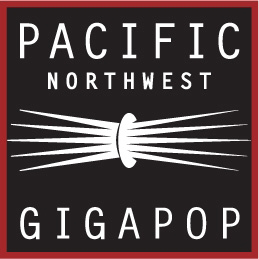Success in the first Japan-Europe Remote Jazz Jam Session Using Uncompressed HDTV Imagery and Internet Metronome
Time delay control made possible collaboration with musicians on the other side of the globe
September 21, 2005
WIDE Project
Representative: Jun Murai
WIDE Project, on September 21 succeeded in an experiment to perform a remote jazz jam session between Japan and Europe linking an event site at EXPO 2005 Aichi and SARA in Amsterdam, the Netherlands using uncompressed HDTV video imagery. The jazz session incorporated one of the research themes of the next generation Internet, Light Path, and was conducted with the cooperation of numerous global research and development networks including IEEAF, PNW Gigapop, CA*net4, MANLAN and SURFnet. Provisioned Light Paths were established between Japan and Europe and were used to transmit the uncompressed HDTV video streams. These extremely high-quality video images were used to present the live performance of jazz musicians at the EXPO Dome and the Netherlands.
Experiments have been conducted in the past to link musicians in different locations over the Internet however such experiments have clearly illustrated the effect that time delays have on the performance. This experiment, initiated by WIDE Project incorporated i-Visto, uncompressed HDTV transmission technologies developed by the NTT Research Laboratory. These technologies enable the transmission of extremely high-quality video streams however we cannot ignore the delay when considering transmission on a global scale and across time zones.
This state of art experiment utilized time delay control equipment to add to the delay of 10Gbps class transmissions, adding time delays of several 1000ms from several ms in order to create an environment in which it is possible to regulate the time delays existing between the musicians.
The use of this framework and the Internet Metronome, principle technology in overcoming time delays, proved the possibility of musical collaboration between musicians in a far distant locations by controlling the timing that comes into play in a single beat or bar of music.
This experiment was conducted in affiliation with the IPv6 Information Appliance Research and Development Project of the National Institute of Information and Communications Technology (NiCT)
The optical light path used in the Japan-Europe connection was made possible through the joint support of the following organizations.
EXPO 2005 Aichi, Japan - Kita-ku, Osaka NTT Communications (1Gbps x 2)
Kita-ku, Osaka - Otemachi, Chiyoda-ku, Tokyo WIDE Project/NTT Com (10Gbps)
Otemachi, Chiyoda-ku, Tokyo - Seattle IEEAF (STS-48 over OC-192)
Seattle - Amsterdam CA*net4 (STS-48 over OC-192)
--------------------------------------------------------------------------------
The project was also conducted through the cooperation of the following organizations.
Pacific Northwest Gigapop (http://www.pnw-gigapop.net/)
CA*net4 (http://www.canarie.ca/)
MAN LAN (http://networks.internet2.edu/manlan/)
SURFnet (http://www.surfnet.nl/)
SARA (http://www.sara.nl/)
Japan Association for the 2005 World Exposition (http://www.expo2005.or.jp/jp/)
NTT Communications (http://www.ntt.com/index-j.html)
NIPPON TELEGRAPH AND TELEPHONE CORPORATION (http://www.ntt.co.jp/)
NIPPON TELEGRAPH AND TELEPHONE WEST CORPORATION (http://www.ntt-west.co.jp/)
Matsushita Electric Industrial Co., Ltd. (http://panasonic.co.jp/)
Asahi Broadcasting Corporation (http://www.asahi.co.jp/)
Cisco Systems Inc. (http://www.cisco.com/jp/)
Powerplay Inc. (http://www.powerplay.jp/)
The University of Tokyo (http://www.u-tokyo.ac.jp/)
Keio University (http://www.keio.ac.jp/)
For more information regarding the event
WIDE Project PR Division : Kimiko Ishikawa
E-mail : press@wide.ad.jp
